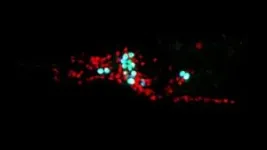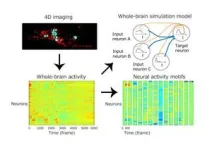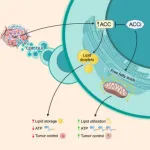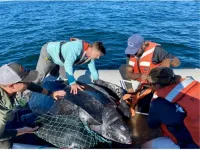(Press-News.org) CORVALLIS, Ore. – A heavy snowpack is fun for skiers and sledders, and it also acts like an open-air storage tank that melts away to provide water for drinking, irrigation and other purposes during dry months.
But exactly how much water is held in snowpacks, and for how long?
That information, critical to water managers around the globe, has taken on new clarity thanks to a new, more holistic calculation technique developed by researchers in the Oregon State University College of Engineering.
“Water managers tend to consider a portfolio of infrastructure options – surface water reservoirs, groundwater recharge programs, etc. – to match supply to demand,” OSU’s David Hill said. “Increased understanding of how much water is in snow should allow them to make long-term planning decisions for how to adjust that portfolio.”
The study by Hill, a professor of civil engineering, and doctoral student Christina Aragon looked at nearly four decades of snowpack data. Through their new metric, which they call snow water storage, they identified a 22% drop in how much water is held annually in the mountain snowpacks of the lower 48 states.
“Unlike other widely used metrics that capture snow variables at a single point in time, like maximum snow water equivalent, or describe snow characteristics in terms of time, such as length of snow season, snow water storage is applicable at numerous time and space scales,” Hill said. “It’s really just a cumulative sum, not a maximum value; it’s like adding up the number of miles you drive in a given year, rather than just thinking about the 500 you did on one day for your road trip.”
In addition to introducing a better tool for gauging how much water is in snowpacks over periods of time, the findings are important because of what the new metric revealed about mountain snowpacks, which play an outsized role in the nation’s water storage.
Hill and Aragon note that of all the water stored in the form of snow in the lower 48, 72% of it is in the mountains, though mountains cover just 16% of the total area.
“There are many ways to describe or quantify our snow resources, but some of the traditional measures, such as the April 1st snowpack, increasingly do not tell the full story,” Hill said. “We present a new way of describing snow’s water storage ability that adds deeper understanding and has more applicability in cases where our snowfall is increasingly intermittent or, regrettably, turning to rain.”
The researchers’ work, presented in a paper published in Hydrology and Earth System Sciences, builds on a commonly used measurement known as snow water equivalent; as its name implies, it’s how much water is left in a container after the snow that was placed in it melts.
“By considering the amount of water held in the snowpack and the amount of time the water is stored as snow, we are able to quantify water storage in different types of snowpacks,” Aragon said. “This includes persistent snowpacks, like we typically have at high elevations in the mountains; transient snowpacks, which are typically found at lower elevations; and snowpacks that are transitioning from persistent to transient due to climate warming.”
Aragon adds that because the snow water storage metric can be applied to multiple types of snowpacks, it may become increasingly valuable for monitoring and predicting water resources “amidst a future of increased climate variability.”
Hill points out that the past several years in the lower 48 have seen a “feast or famine cycle of extremes when it has come to the where and the when of our snow and rain.” And in general snowpacks have considerably declined over the past 10 to 20 years.
“That particularly matters in places like Oregon, where 15% of the state’s total annual precipitation falls as snow, and our snowpack functions like a reservoir,” he said. “It holds back winter precipitation and slowly releases it in spring and early summer. This is useful because, at those times, our rainfall has tapered off for the year, but demand for water is on the rise.”
As the climate warms and snowpacks become more and more variable – the winter of 2023-24 is a good example, Hill said – a metric like the new one developed at OSU helps to more objectively quantify the reservoir storage aspect of the globe’s snowpacks.
From local to regional scales, he notes, municipal and agricultural users of water need to balance demand with supply, and snow storage dramatically influences the timing of the supply side.
“As we move forward, and as we have moved from the past to the present, the relatively good news is that annual precipitation amounts tend to not change that dramatically,” he said. “However, changing temperatures greatly influence snow storage and therefore the timing of water availability.”
Funding for the work came from the OSU Graduate School Oregon Lottery Award for Academic Excellence and from the Oregon State Water Resources Graduate Program Alumni Award.
END
Oregon State researchers take deep dive into how much water is stored in snow
2024-03-15
ELSE PRESS RELEASES FROM THIS DATE:
Experts document a decade of progress under the workforce innovation and opportunity act benefiting students with disabilities
2024-03-15
Amsterdam, March 15, 2024 – Ten years ago, the United States passed into federal law the Workforce Innovation and Opportunity Act (WIOA), broadening the mandate of state vocational rehabilitation agencies to facilitate successful school-to-work transitions for student populations. Among its many provisions, the measure provided an unparalleled opportunity to expand the scope of available experiences and training to help students with disabilities prepare for competitive integrated employment.
A special issue of the Journal of Vocational Rehabilitation, published by IOS Press, explores the state-of-the-art of pre-employment transition services (Pre-ETS) practices, and scholarship. ...
Why killer T cells lose energy inside of solid tumors
2024-03-15
CHAPEL HILL, N.C. – T cells are often called “assassins” or “killers” because they can orchestrate and carry out missions to hunt down bacteria, viruses, and cancer cells throughout the body. Mighty as they may be, recent research has shown that once T cells infiltrate the environment of a solid tumor, they lose the energy needed to combat the cancer.
A research team led by Jessica Thaxton, PhD, MsCR, associate professor of cell biology and physiology and co-leader of the Cancer Cell Biology Program ...
Sylvester researchers, collaborators call for greater investment in bereavement care
2024-03-15
MIAMI, FLORIDA (March 15, 2024) – The public health toll from bereavement is well-documented in the medical literature, with bereaved persons at greater risk for many adverse outcomes, including mental health challenges, decreased quality of life, health care neglect, cancer, heart disease, suicide, and death. Now, in a paper published in The Lancet Public Health, researchers sound a clarion call for greater investment, at both the community and institutional level, in establishing support for grief-related suffering.
The authors emphasized that increased mortality worldwide caused by the COVID-19 pandemic, suicide, drug overdose, homicide, ...
Damon Runyon Cancer Research Foundation awards $4.8 million to top young scientists
2024-03-15
The Damon Runyon Cancer Research Foundation has named 14 new Damon Runyon Fellows, exceptional postdoctoral scientists conducting basic and translational cancer research in the laboratories of leading senior investigators. The prestigious, four-year Fellowship encourages the nation's most promising young scientists to pursue careers in cancer research by providing them with independent funding ($300,000 total) to investigate cancer causes, mechanisms, therapies, and prevention.
The Foundation has also named six recipients of the Damon Runyon-Dale F. Frey Award for Breakthrough Scientists. This award recognizes Damon Runyon Fellows who have exceeded the Foundation’s ...
Groundbreaking study reveals extensive leatherback turtle activity along U.S. coastline
2024-03-15
A new study led by a team of marine scientists at the University of Miami Rosenstiel School of Marine, Atmospheric and Earth Science and the National Oceanic and Atmospheric Administration Southeast Fisheries Science Center, provides groundbreaking findings that offer insights on the migration and foraging patterns of leatherback sea turtles along the Northwest Atlantic shelf.
Scientists have known that leatherbacks commonly swim from the South and Mid-Atlantic Bights during the warmer months to reach feeding areas near New England and Nova Scotia, Canada where food is plentiful. ...
Imaging with 99mTc-maraciclatide correlates with identification of early-stage endometriosis by laparoscopic surgery
2024-03-15
The presentation summarised the preliminary findings from patients with known or suspected endometriosis who were imaged with a SPECT-CT camera and subsequently underwent planned laparoscopic surgery, a key-hole surgical procedure to establish the presence, absence and location of endometriotic lesions. The imaging findings were compared to the surgical and histology reports and indicate that 99mTc-maraciclatide holds potential as a non-invasive test for early-stage endometriosis.
Specifically these preliminary findings demonstrate that 99mTc-maraciclatide has the potential to:
Visualise superficial peritoneal endometriosis which is found ...
BU researchers first to identify a signaling molecule in neuroblastoma immunosuppression and aggressiveness
2024-03-15
(Boston)—The MYCN oncoprotein (proteins related to the growth of cancer cells) plays a key role in starting, advancing and making it difficult to treat various human cancers. When MYCN is overactive, especially in high-risk neuroblastoma (childhood cancer often found in the adrenal glands), the tumors become less responsive to immunotherapy—a treatment that uses the body's immune system to fight cancer. Still, recognition of this problem has not led to any effective strategies to tackle this problem.
In a new study from Boston University Chobanian & Avedisian School of Medicine, researchers found that MYCN selectively increases ...
CHOP researchers discover key metabolic process responsible for rapid immune responses
2024-03-15
Philadelphia, March 15, 2024 – Researchers from Children’s Hospital of Philadelphia (CHOP) identified a key metabolite in cells that helps direct immune responses and explains at a single cell level why immune cells that most efficiently recognize pathogens, vaccines, or diseased cells grow and divide faster than other cells. The findings also indicate that a better understanding of this metabolite and its role in immune response could improve the design of immunotherapies and create longer-lived responses against different types of cancer as well as enhance vaccine strategies. The findings were published ...
Gut bacteria make neurotransmitters to shape the newborn immune system
2024-03-15
Weill Cornell Medicine investigators discovered that unique bacteria colonize the gut shortly after birth and make the neurotransmitter serotonin to educate gut immune cells. This prevents allergic reactions to food and the bacteria themselves during early development.
The preclinical study, published in Science Immunology on Mar. 15, showed that bacteria abundant in the guts of newborns produce serotonin, which promotes the development of immune cells called T-regulatory cells or Tregs. These cells suppress inappropriate immune ...
Lesbian, gay and bisexual women smoke more, are less likely to quit
2024-03-15
People who identify as lesbian, gay and bisexual – particularly women – respond more positively to tobacco marketing, are more inclined to smoke cigarettes daily and may have a more difficult time quitting, according to two studies by a Rutgers Health researcher.
The studies, published in the Annals of LGBTQ Public and Population Health and Preventive Medicine Reports, investigated how some among the LGBTQ population respond to tobacco marketing, how they use tobacco and their history of quitting using two large national datasets, including the Population Assessment of Tobacco and ...





